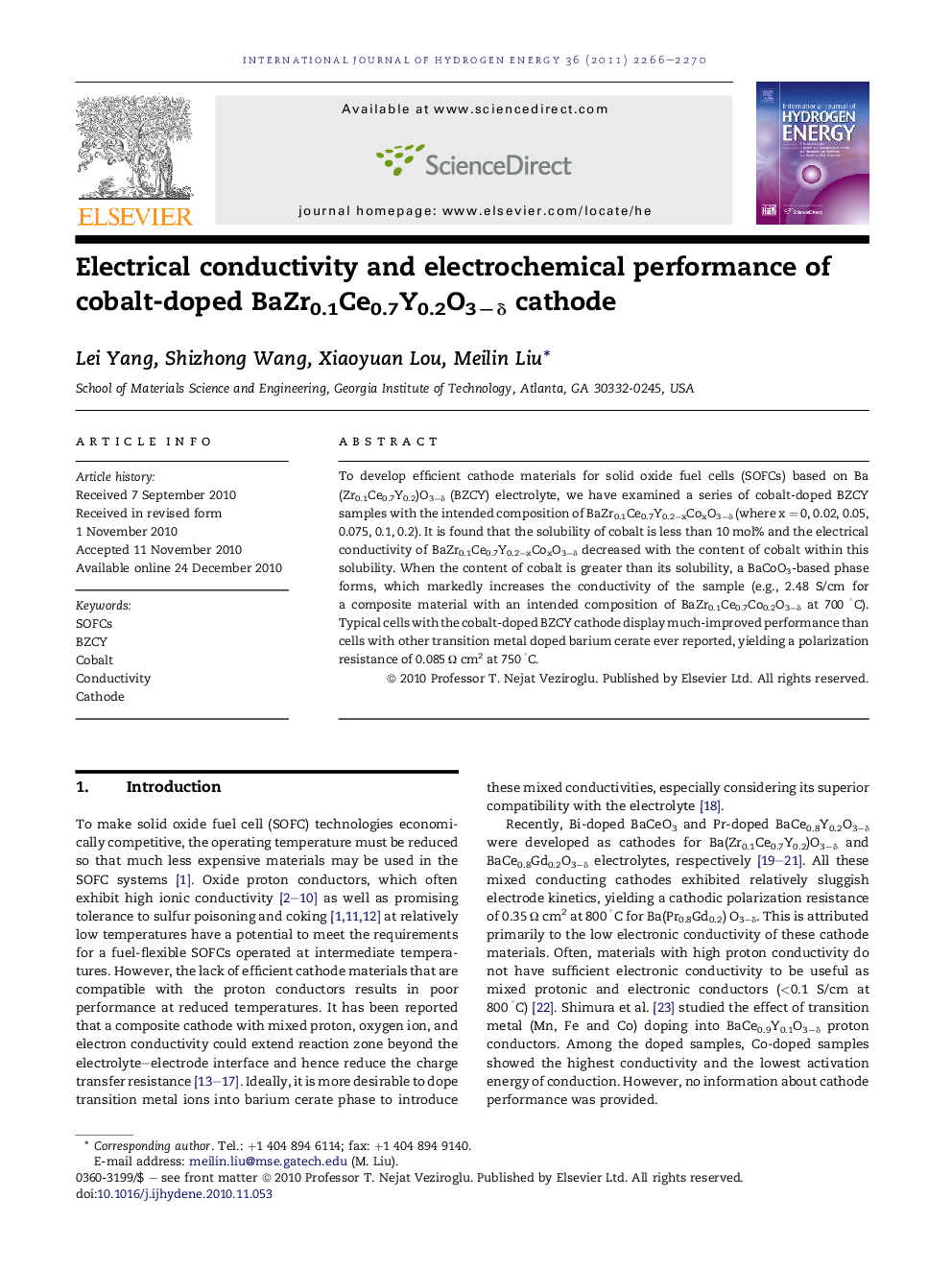| Article ID | Journal | Published Year | Pages | File Type |
|---|---|---|---|---|
| 7724458 | International Journal of Hydrogen Energy | 2011 | 5 Pages |
Abstract
To develop efficient cathode materials for solid oxide fuel cells (SOFCs) based on Ba(Zr0.1Ce0.7Y0.2)O3âδ (BZCY) electrolyte, we have examined a series of cobalt-doped BZCY samples with the intended composition of BaZr0.1Ce0.7Y0.2âxCoxO3âδ (where x = 0, 0.02, 0.05, 0.075, 0.1, 0.2). It is found that the solubility of cobalt is less than 10 mol% and the electrical conductivity of BaZr0.1Ce0.7Y0.2âxCoxO3âδ decreased with the content of cobalt within this solubility. When the content of cobalt is greater than its solubility, a BaCoO3-based phase forms, which markedly increases the conductivity of the sample (e.g., 2.48 S/cm for a composite material with an intended composition of BaZr0.1Ce0.7Co0.2O3âδ at 700 °C). Typical cells with the cobalt-doped BZCY cathode display much-improved performance than cells with other transition metal doped barium cerate ever reported, yielding a polarization resistance of 0.085 Ω cm2 at 750 °C.
Keywords
Related Topics
Physical Sciences and Engineering
Chemistry
Electrochemistry
Authors
Lei Yang, Shizhong Wang, Xiaoyuan Lou, Meilin Liu,
